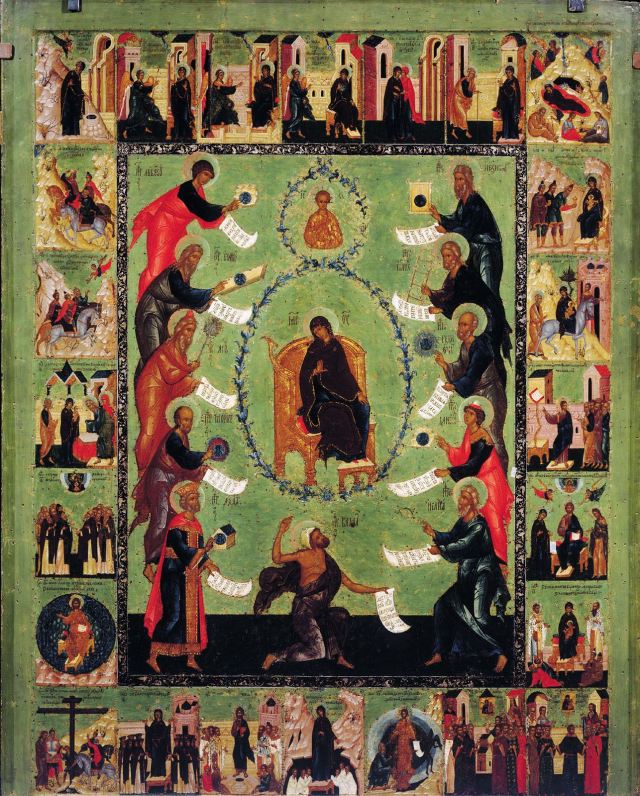Among the thousands of
hymns attributed to St. Romanos, the Melodist of
Constantinople, the AKATHIST was without doubt the most
successful. Composed for liturgical use, c. 530, it must
have entered at once into the life of monasteries and
convents; at least of some of them.
On August 7, 626, after the great liberation of
Constantinople, Patriarch Sergius chose it as a Hymn of
Thanksgiving to the Mother of God, the Theotokos, adding
the prelude in which is an allusion to Mary's part in
the remarkable victory. This fact indicates that Romanos'
Hymn was already considered the most beautiful of all
hymns existing in the Byzantine tradition in honor of
the Blessed Virgin, the Mother of God. It was moreover
precisely on this occasion that Romanos' Hymn, composed
for the feast of the Annunciation, became the AKATHIST,
it was sung "standing" by the clergy and the faithful.
After a second
miraculous liberation of Constantinople in 717-718,
Romanos' Hymn, already the AKATHIST, was again
chosen by the Patriarch St. Germanos of
Constantinople, the founder of the Feast of the
AKATHIST, on the Saturday of the 5th week in Lent.
In the
eighth century a beautiful "Canon" composed
of nine odes was added to Romanus's Hymn.
The word "akathistos"
literally means "not sitting," i.e.,
standing; normally all participants stand
while it is being prayed. The hymn is
comprised of 24 stanzas, alternating long
and short. Each short stanza (kontakion)
ends with the singing of "Alleluia." Each
longer stanza (ikos) ends with the refrain:
"Rejoice, O Bride Unwedded."
